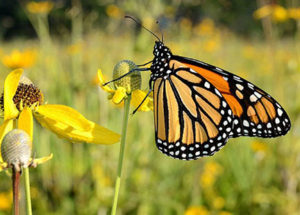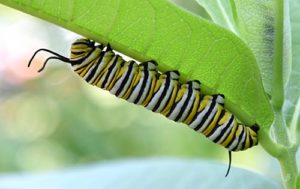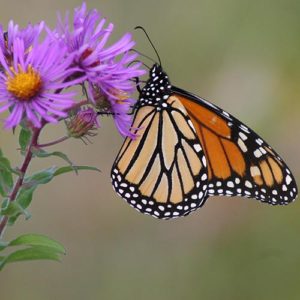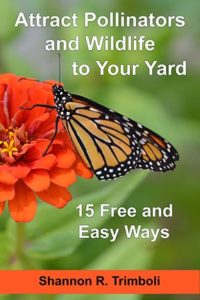On July 21, 2022, the IUCN listed the migratory population of the monarch butterfly as endangered on their Red List of Threatened Species. Monarch butterflies are so familiar and so beloved that the reaction was immediate and passionate. In many cases, it was also misinformed. So, let’s dig in a little deeper and talk about what the listing means and what you need to know about it.
What is the IUCN?

Before we discuss the listing, it is important to take a step back and understand who the listing agency is and where they fit into the picture. The International Union for Conservation of Nature, better known as the IUCN, is a global network of government agencies, non-government organizations, leaders of indigenous peoples, universities, research institutes, and businesses. The IUCN is highly respected in the conservation world and is seen as the global authority when it comes to the status of different species. However, they have zero regulatory or oversight authority.
What is the Red List of Threatened Species?
The Red List of Threatened Species, a.k.a The Red List, was established by the IUCN in 1964 – 9 years before the U.S. Endangered Species Act was passed. At its most basic level, the Red List is a listing of species around the world and their status. In some ways that statement is a major over simplification, but that’s ok for the purposes of this discussion.
Each species on the Red List is placed in one of 9 categories – Not Evaluated, Data Deficient, Least Concern, Near Threatened, Vulnerable, Endangered, Critically Endangered, Extinct in the Wild, or Extinct. Conservationists, scientists, and others take the Red List very seriously and hold it in high regard, but its categories are basically for informational purposes only. They have no inherent regulatory or protective measures associated with them.
Did the IUCN really list the monarch butterfly as endangered?
No, the IUCN didn’t list the monarch butterfly as endangered. They recognize two subspecies of monarchs – Danaus plexippus plexippus and Danaus plexippus megalippe. The first subspecies, Danaus plexippus plexippus, is the one that migrates and is what most of us think of when we think of monarch butterflies. It was this migratory subspecies that the IUCN listed as endangered (that includes both the eastern and western migratory populations).
The second subspecies is found in southern Florida, Mexico, the Caribbean, Central America, and into northern South America. That subspecies doesn’t undergo long distance migrations and wasn’t included in the listing. Nor is the monarch butterfly as a whole species considered endangered by the IUCN.

Why did the IUCN list the migratory population / subspecies of monarch butterfly as endangered?
When assigning a species (or subspecies) to a category, the IUCN evaluates the species by its population size, how much the population has declined, how restricted its geographic range is, and an analysis of how likely it is to become extinct. When evaluated against those criteria, the IUCN found that the migratory subspecies of the monarch butterfly ranked as endangered due to habitat loss, climate change, and pesticide exposure. The non-migratory subspecies didn’t warrant the same listing when evaluated against the IUCN’s criteria.
The fact that the migratory subspecies met the IUCN’s criteria for being listed as endangered isn’t surprising. A year and a half ago, in December 2020, the U.S. Fish and Wildlife Service also ruled that the monarch butterfly (full species, not just the migratory subspecies) met their criteria to be listed as either threatened or endangered under the U.S. Endangered Species Act. Both agencies listed the same threats to the survival of the monarch butterfly.
However, instead of declaring the monarch endangered (or threatened) and listing it on the Endangered Species List, the U.S. Fish and Wildlife Service made it a candidate species due to higher priority species needing to be listed. A lot of people disagreed with that ruling, but personally I thought it made a lot of sense. (See my blog article, What does the endangered species ruling for the monarch butterfly really mean?, if you want to better understand the U.S. Fish and Wildlife Service’s 2020 finding and why I thought it was the right move.)
Why does it make a difference who lists it as endangered?
The IUCN is an international network and while it is very highly regarded, it has zero regulatory or oversight authority. The IUCN also doesn’t provide any direct funds for protecting or restoring species that are listed on the Red List. (Although, funding agencies may be more likely to provide funds for research or recovery efforts related to species that are listed as endangered or higher on the Red List.) In some ways you can think of the IUCN as a third-party advisory committee.
The U.S. Fish and Wildlife Service is a federal agency with regulatory authority within the U.S. Listing a species on the U.S. Endangered Species List under the Endangered Species Act, not only provides the species with conservation recognition, but also has specific legal and funding ramifications. If the U.S. Fish and Wildlife Service lists the monarch butterfly as endangered, then the legal and funding ramifications associated with the Endangered Species Act will go into play for the monarch, just like any other animal on the U.S. Endangered Species List.

What changes as a result of the IUCN listing the migratory population of the monarch butterfly as endangered?
From a practical standpoint, not much, if anything. It raises awareness with the public and gets people talking again, at least for the short term. The IUCN’s listing might also make it a little easier for Mexico and the U.S. to collaborate on joint monarch conservation initiatives because the IUCN is an unbiased, third party. However, the IUCN’s listing doesn’t add any extra protection for the migratory subspecies of the monarch butterfly on either side of the border.
What can we do?
Plant milkweeds that are native to your area for the monarch caterpillars, make sure you provide flowers throughout the season (and especially during the fall migration) for the adult monarchs, and limit your use of herbicides. Those are the same actions that I suggested in my earlier blog article about the U.S. Fish and Wildlife Service’s finding in 2020, and which virtually every conservation organization is also suggesting.
I know we often feel like we can’t do anything to make a difference or help stop the decline of an endangered species. But that’s not the case here. This is a rare situation where we can make a significant difference. We don’t have to wait for the U.S. Fish and Wildlife Service or any other organization to officially designate the monarch butterfly as endangered. You and I can take actions now that have the potential to help make sure that the monarch never goes on the Endangered Species List. I don’t know about you, but I like that idea much better than waiting to hear that the monarch has been listed as endangered.
Update:
In 2023 the IUCN changed their designation of the eastern migratory population of the monarch butterfly from “endangered” to “vulnerable” because they determined that the endangered classification was based on inaccurate data.

Do you want to make your yard more pollinator and wildlife friendly, but aren’t sure where to start?
Check out my book, Attract Pollinators and Wildlife to Your Yard: 15 Free and Easy Ways, for some easy, quick wins to get you started.

Backyard Ecology: Exploring Nature in Your Backyard
Nature isn’t just “out there.” It’s all around us, including right outside our doors. Hi, my name is Shannon Trimboli, and I am the host of Backyard Ecology. I live in southcentral Kentucky and am a wildlife biologist, educator, author, beekeeper, and owner of a nursery specializing in plants for pollinators and wildlife conservation. I invite you to join me as we ignite our curiosity and natural wonder, explore our yards and communities, and improve our local pollinator and wildlife habitat. Learn more or subscribe to my email list at www.backyardecology.net.

Leave a Reply to Backyard Ecology Cancel reply